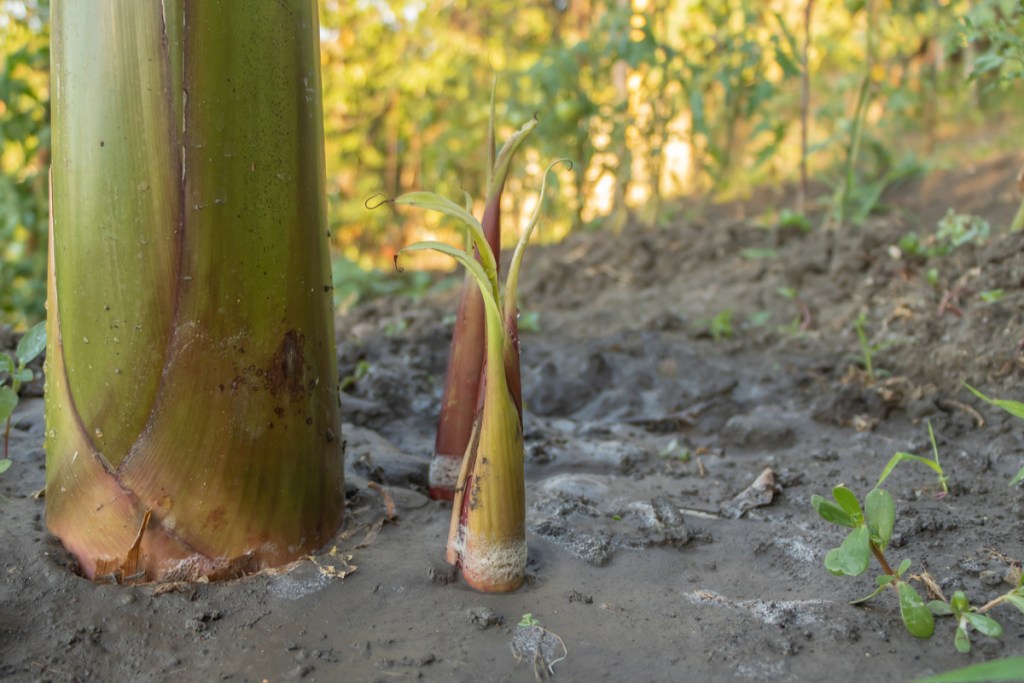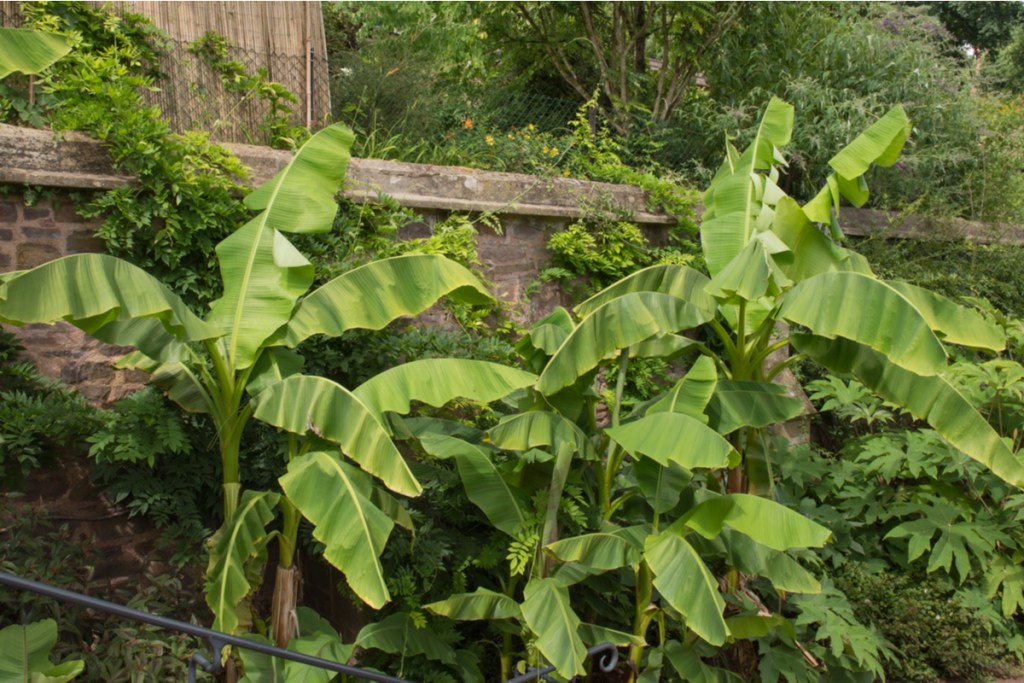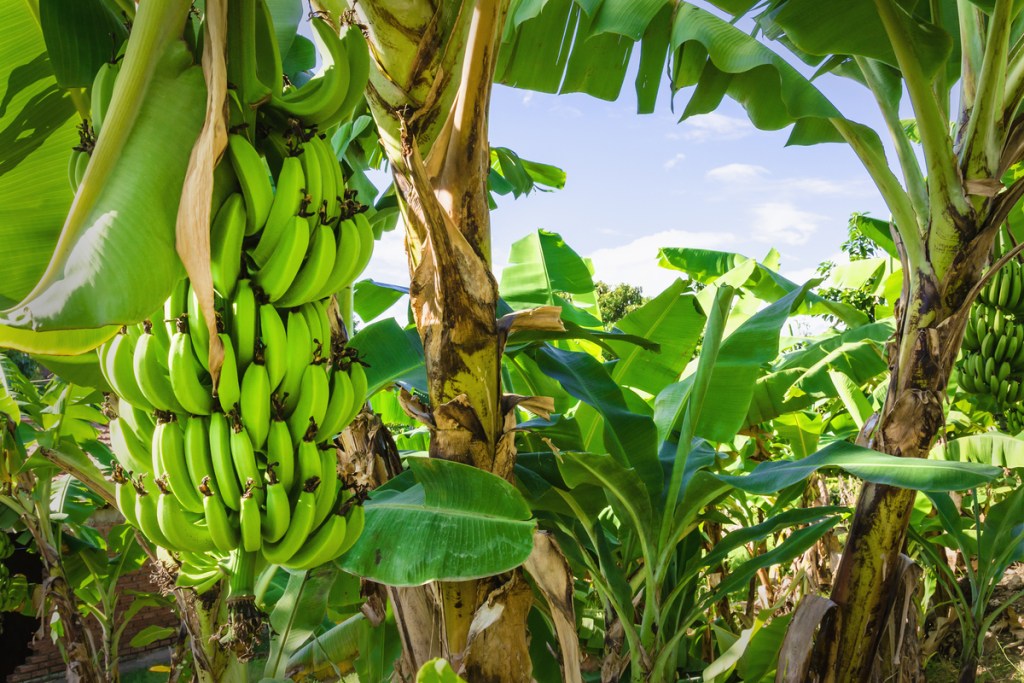Bananas are a delicious, nutritious, and versatile fruit. They are flavorful enough to eat on their own, but mild enough to work well with other flavors. If you’re a fan of this fruit, you might be interested in growing your own banana tree. The important part of having a banana tree, though, is the fruit. If you’re getting impatient waiting on your tree to produce fruit, or if your banana tree isn’t producing as much fruit as you thought it would, then you’re in the right place. We’ll answer all your banana questions so you can be sure you’re getting the most out of your tree.
How long does it take banana trees to mature?
Banana trees are interesting, as they aren’t technically trees. They’re actually herbaceous perennials, which is helpful since we no longer grow bananas from seeds. Instead, the roots of a banana tree send up a sucker, or smaller but still attached, plant. These suckers are then separated from the parent tree and planted elsewhere, to grow into a mature plant on its own.
In total, it takes between nine and 15 months for a banana tree to fully mature. However, banana trees can take longer, depending on the specific variety of banana you’re growing and whether or not all of its needs are being met. Lack of light, incorrect climate, and nutrient deficiencies can slow banana tree maturation significantly.

When are bananas ready for harvest?
Once your banana tree is fully mature, it can begin to produce fruit. The first sign of fruiting is flowers. Banana flowers are fairly large and are an interesting shade of dark purple, so they’re hard to miss. These flowers begin appearing in mid to late spring, although they can also form in early summer if you had a late winter. The first flowers to appear are the female flowers, which are the ones that form fruits. Keep an eye on those flowers and you’ll have a good estimate of when your bananas will be ready to harvest.
Bananas take three to four months to form after the female flowers are pollinated. Typically this means that your bananas will be ready to harvest in late summer or early fall, depending on when your tree began to flower. Growing time can also vary between banana varieties, so be sure you know what kind of banana you’re growing.

Best care practices to ensure it fruits
One of the most important things for banana trees is temperature. Bananas are native to the tropics, where the weather is hot and humid. Cold weather can stunt their growth or even damage them. If you live in a colder region, consider growing a smaller banana variety in a container. Building a wind break and using plenty of mulch can also help.
Banana trees need a lot of light. Cold can kill a banana plant, but inadequate light slows its growing speed and results in a much longer wait time for fruit. A grow light can help with indoor banana trees, but the easiest solution for outdoor trees is to choose a sunny planting location.
Make sure the soil your banana tree is in is rich, loamy, and well-draining. Although banana trees need a lot of water, it’s still possible to overwater them if they’re in poor-draining soil. The soil should also be nutritionally dense. Adding compost or banana-specific fertilizer fairly regularly can help you ensure a good harvest.

How to harvest bananas, and what happens afterwards?
Depending on the specific variety of banana you’re growing, size may or may not be a good indicator of harvest time. Instead, look for a hand, or group, of bananas that have stopped getting thicker. The upper layer of bananas in the hand should be changing to a lighter shade of green. Remember that bananas will ripen after harvest, and green bananas are still edible, so harvesting them a little too early will result in smaller, but not inedible, fruit.
Using a sharp, clean knife or pair of garden shears, cut the entire hand off of the tree. Leave some of the stem at the top of the hand for an easier time carrying it. Depending on the size of your tree, you may need to use a ladder to harvest the bananas. Be careful when securing and climbing the ladder. It’s easier if you have someone to stand by that can hold the bananas while you climb down.
After harvesting the bananas, your tree may appear to die. This is because each stem of the banana plant only fruits once. However, the plant itself will remain alive. Any suckers your tree has put out will grow and fruit as well. The stem that just finished fruiting can be cut down, both to give the next stem room to grow and to help your plant conserve energy.
With all this in mind, you’re ready to help your banana tree produce delicious fruit for your smoothies or snacks. Pay close attention to the needs of your plant, and keep an eye out for any suckers that form near your original plant. With patience and proper care, you’ll have plenty of fresh bananas before you know it!
Editors' Recommendations
- 3 incredible reasons why you should be using coffee grounds in your garden
- These plants should be among the first you plant this year
- Have you ever wondered if potatoes are fruits or vegetables? We have answers
- Keep your yard happy all year with these 5 grasses that grow in the winter
- 4 November garden plants you should consider growing




